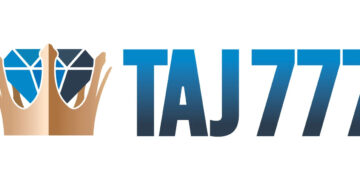In today’s fast-paced healthcare environment, accuracy and efficiency are the backbone of successful operations. Medical billing and coding professionals play a vital role in ensuring that providers receive proper reimbursement and patient information is documented accurately. However, as technology continues to evolve, traditional manual coding is increasingly being replaced—or enhanced—by advanced healthcare coding software.
This shift brings up an important question: Is automated coding superior to manual coding, or do both approaches have their place? To find the right balance, it’s essential to understand the distinctions, advantages, and challenges of each method.
Understanding the Basics of Healthcare Coding
Medical coding translates healthcare services, diagnoses, and procedures into standardized alphanumeric codes used for billing, insurance claims, and patient records. Accuracy in this process is crucial—errors can result in claim denials, delayed payments, or compliance violations.
Historically, skilled professionals handled coding manually, referencing detailed codebooks like ICD-10, CPT, and HCPCS. But as the healthcare landscape grows more complex, automation and medical billing systems have become key to improving accuracy and speed—enter healthcare coding software.
What Is Healthcare Coding Software?
Healthcare coding software is a technology-driven tool that streamlines the coding process by automating repetitive tasks, minimizing errors, and improving accuracy. It reviews clinical documents—such as physician notes or EHRs (Electronic Health Records)—to suggest or assign the most appropriate codes automatically.
These systems typically integrate with medical billing software to simplify claim generation, submission, and tracking. By leveraging AI and Natural Language Processing (NLP), modern coding tools can interpret clinical text, cross-reference codes, and identify inconsistencies—helping coders focus on complex cases instead of manual data entry.
Such tools are especially beneficial for large hospitals and multi-specialty practices, where the volume of records can overwhelm human coders.
Manual Coding: The Traditional Approach
Before automation, every code was assigned manually. Expert coders analyzed documentation, determined relevant diagnoses and procedures, and selected the correct codes from official manuals.
Manual coding remains valuable—particularly in smaller practices or specialized fields—because it relies on human judgment and contextual understanding. Skilled coders can detect nuances or exceptions that software may miss, such as ambiguous notes or unique patient situations.
However, manual coding is time-consuming and susceptible to human error. As regulatory requirements grow more complex, it becomes harder for manual processes to keep pace.
Comparing Healthcare Coding Software and Manual Coding
Here’s how the two methods stack up across key performance factors like accuracy, efficiency, cost, and compliance.
1. Accuracy and Consistency
Automated systems deliver consistent results by applying coding rules systematically. Healthcare coding software cross-checks documentation against the latest regulations, reducing errors caused by fatigue or oversight. Regular updates ensure ongoing compliance with new coding standards.
Manual coding can be highly accurate when performed by experienced professionals, but outcomes may vary depending on the coder’s expertise and familiarity with current guidelines.
2. Efficiency and Speed
When it comes to speed, coding software outperforms manual methods. Automation processes large volumes of data quickly and integrates with billing systems to generate claims instantly—accelerating reimbursements and reducing turnaround time.
Manual coding, in contrast, requires detailed, line-by-line review. In high-volume facilities, this can create backlogs and slow down revenue cycles.
3. Cost Considerations
Although implementing healthcare coding software involves upfront costs—like licensing and training—it often reduces long-term expenses by improving accuracy, minimizing denials, and lowering labor costs.
Manual coding demands a larger team of certified professionals, increasing payroll and administrative costs. Additionally, errors and rework can lead to lost revenue.
4. Compliance and Audit Readiness
Modern coding software includes built-in compliance tools, such as real-time validation checks and alerts for missing or inaccurate data. These features reduce audit risks and ensure adherence to HIPAA, CMS, and other regulatory standards.
In manual coding, compliance depends entirely on individual vigilance and expertise, leaving more room for human oversight—especially in large healthcare networks.
5. Human Judgment and Contextual Understanding
While technology is powerful, it can’t replicate human reasoning. Certain cases—like complex diagnoses or incomplete documentation—require a coder’s clinical insight. Human coders can clarify ambiguities and make nuanced decisions that automated tools might misinterpret.
For specialized fields such as oncology, psychiatry, or rare disease management, manual review remains indispensable.
The Best of Both Worlds: A Hybrid Approach
Many healthcare organizations now combine automation with human expertise for optimal results. This hybrid model allows software to perform initial code suggestions, which trained coders then review and validate.
This collaboration delivers:
- Faster processing and fewer errors
- Improved compliance and audit readiness
- Consistent accuracy with human oversight
By merging automation’s efficiency with human intuition, healthcare providers can enhance both productivity and precision—achieving the best of both worlds in medical coding.
Read More: Healthcare Coding Software vs. Manual Coding: What You Need to Know
















